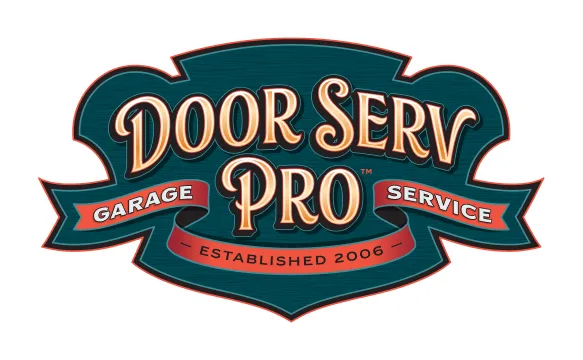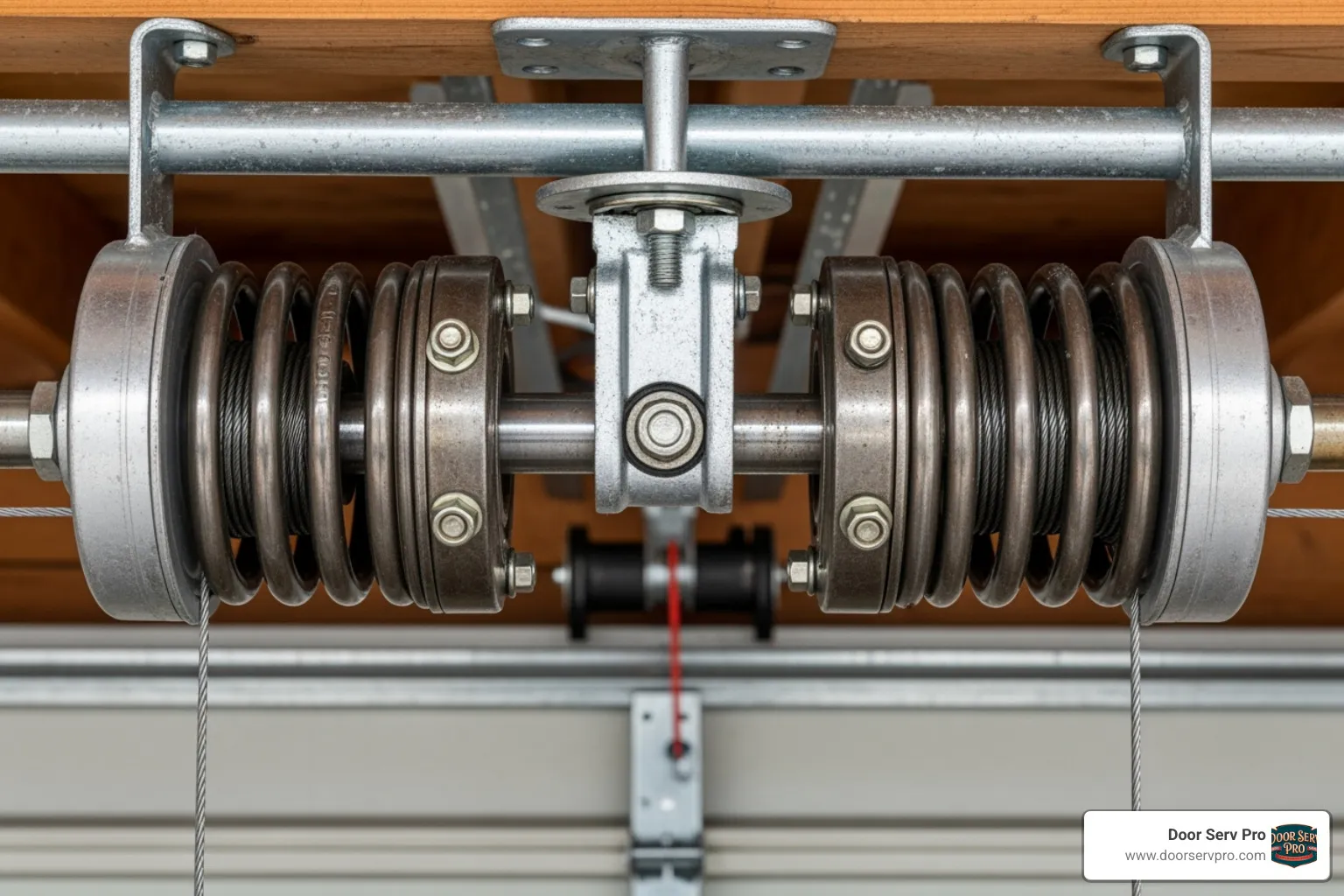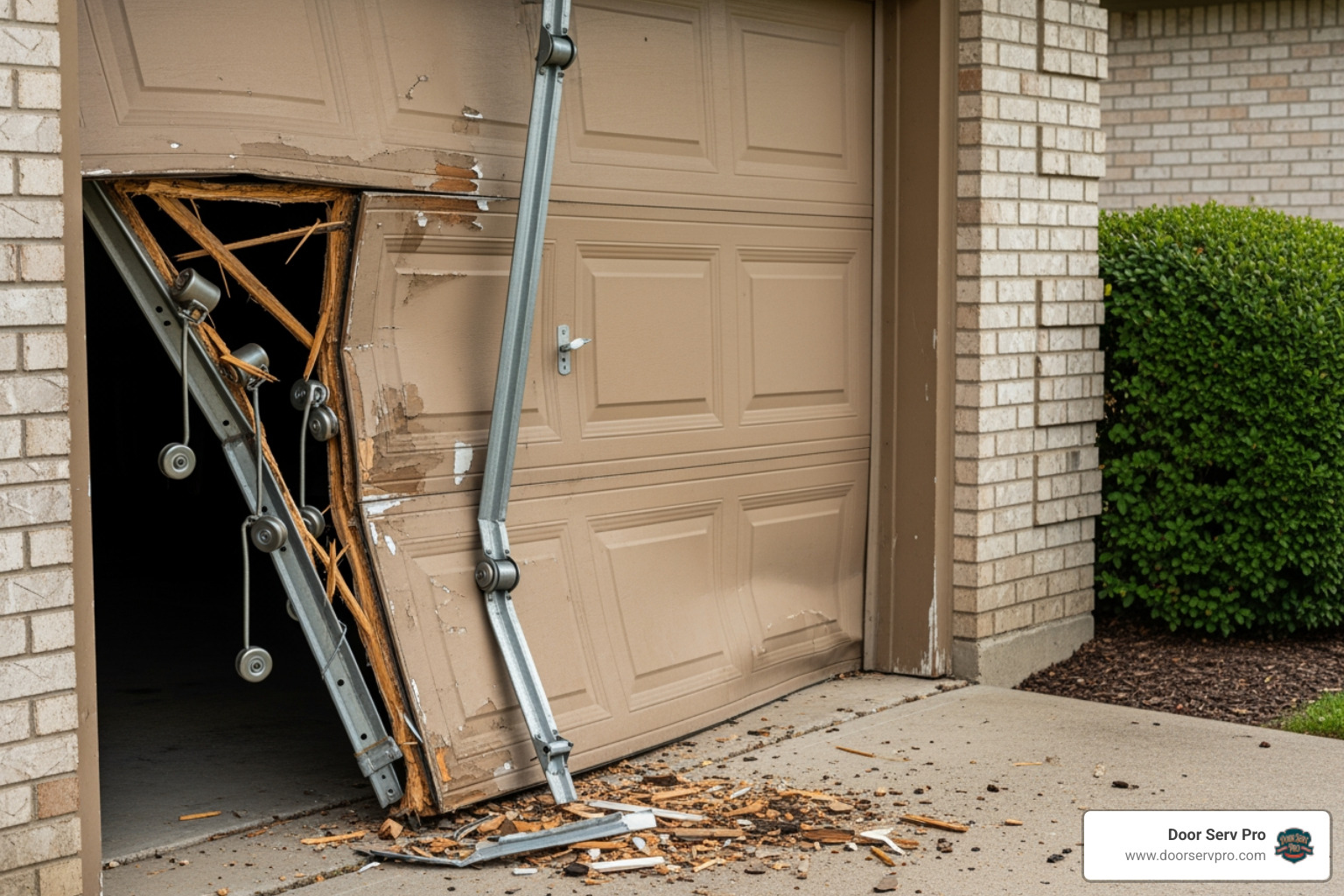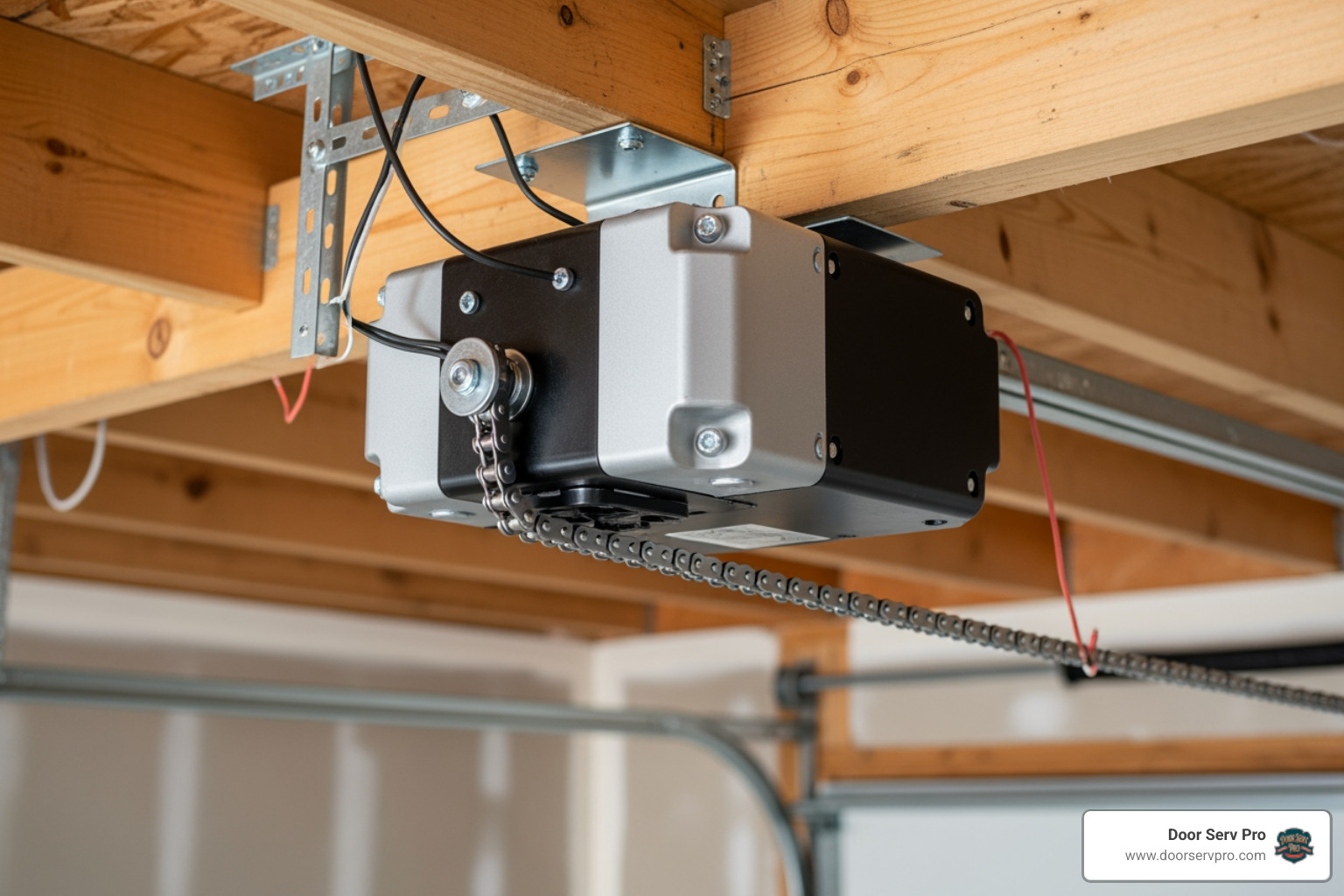Why Understanding Garage Door Torsion Springs Can Save You Time and Money
A garage door torsion spring is a powerful metal coil mounted above your garage door. It provides the counterbalancing force needed to lift hundreds of pounds with ease. When this critical component fails, your daily routine can come to a grinding halt, often at the worst possible moment.
Quick Facts About Garage Door Torsion Springs:
- Function: Twists to store energy that lifts your heavy garage door.
- Location: Mounted horizontally above the door on a metal shaft.
- Lifespan: Standard springs last about 10,000 cycles (5-14 years depending on usage).
- Failure Signs: Loud bang, visible gap in the coil, door won't open, or closes too quickly.
- Replacement: Best practice is to replace both springs simultaneously.
Imagine being stuck in your garage, late for work, because of a broken torsion spring. This frustrating scenario is a daily reality for thousands of homeowners.
Critical Safety Warning: Torsion springs operate under immense pressure and can cause serious injury or death if mishandled. Even when broken, they remain under extreme tension.
This DIY guide covers everything you need to know about garage door torsion spring replacement, from identifying the problem to deciding whether to do it yourself or call a professional. We'll cover measurements, tools, step-by-step instructions, and, most importantly, when this dangerous job requires expert hands.
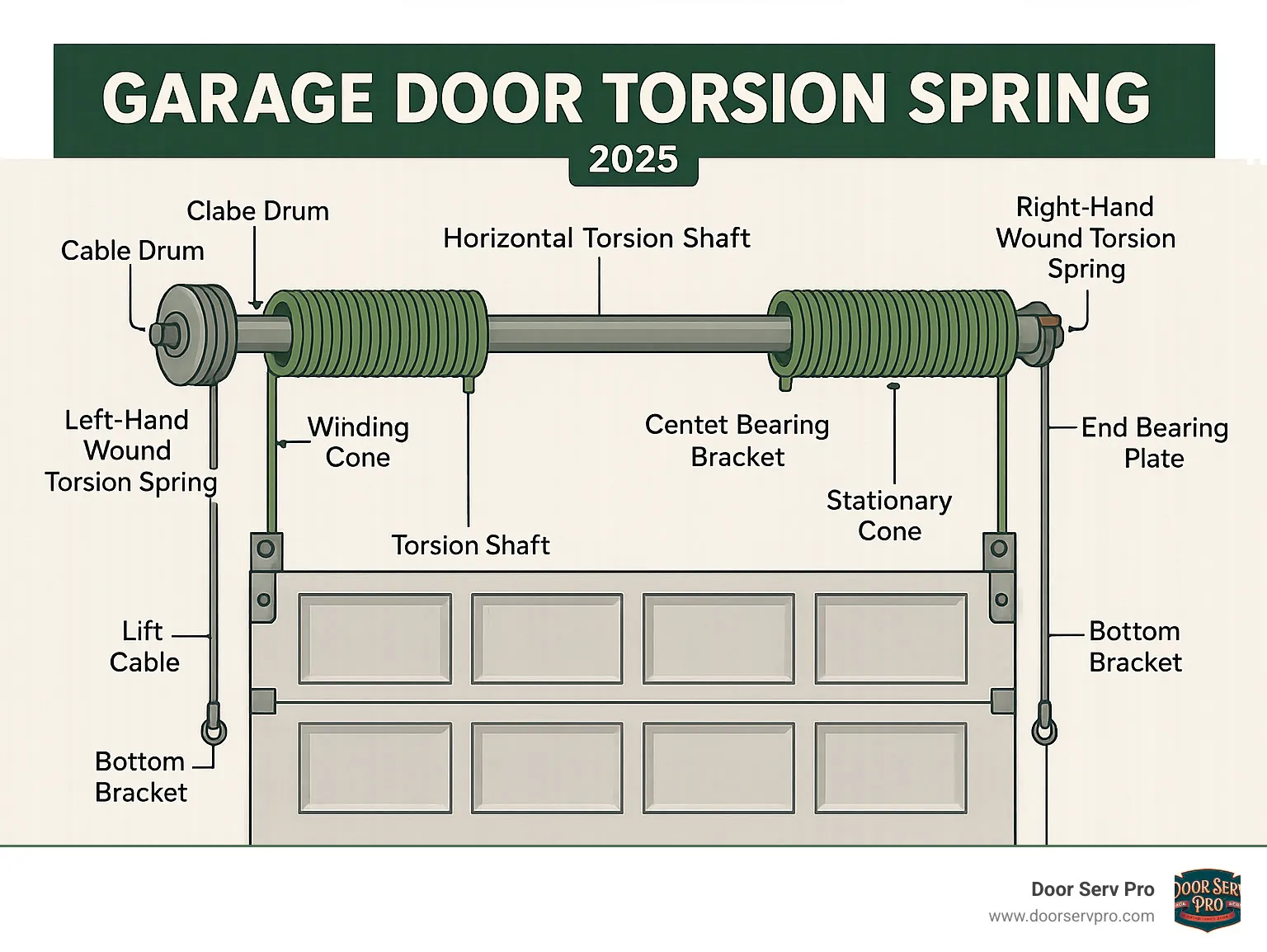
Understanding Your Torsion Spring System
Unlike older extension springs that stretch along the sides, most modern doors use a garage door torsion spring system for smoother, more balanced operation.
Torsion springs mount horizontally on a metal shaft above the door. They create torque—a twisting force—that transfers through the shaft to cable drums, which then lift the door smoothly and evenly. This system makes a 200-pound garage door feel almost weightless.
The beauty of a garage door torsion spring system is how it distributes weight across the door's width, resulting in smoother operation and less strain on your opener.
Every garage door torsion spring has a lifespan measured in "cycles"—one open and close sequence. The industry standard is 10,000 cycles. If your family uses the door twice daily, a spring could last over 14 years. However, with frequent use, you might burn through those cycles in just 5-7 years.
The spring doesn't weaken gradually; it snaps when it reaches its cycle limit, often at the most inconvenient time.
Signs of a Broken or Failing Garage Door Torsion Spring
A broken garage door torsion spring is hard to miss. The signs range from subtle to dramatic.
- A loud bang, like a gunshot in your garage, is the sound of the spring releasing its stored tension instantly. If you hear this, do not operate the door.
- The door won't open. Your opener motor may strain, or its safety features might prevent it from operating to avoid damage.
- The door is extremely heavy or slams shut. When the spring fails, gravity takes over, making the door dangerous to operate manually.
- A visible gap in the spring coils is a clear sign of a break. You might also notice the door lifting unevenly if only one of two springs has failed.
- A snapped or tangled lift cable can also be a clue, as its failure is often caused by the sudden tension shift from a broken spring.
Key Components and Their Roles
Your garage door torsion spring system is a team of components working together:
- Torsion Shaft: A metal rod running through the springs that rotates to transfer energy.
- Cable Drums: Spools at each end of the shaft that wind the lift cables. They are typically 4 inches in diameter for residential doors.
- Lift Cables: Connect the bottom of the door to the cable drums, doing the heavy lifting.
- Winding Cone: The end of the spring with holes for winding bars, used to adjust tension. This is a high-tension part and requires extreme care.
- Stationary Cone: Anchors the other end of the spring to a bracket, keeping it secure.
- Center Bracket: Supports the torsion shaft, especially in two-spring systems.
- End Bearing Plates: Support the shaft at each end, allowing it to rotate smoothly.
The Pre-Replacement Checklist: Measuring and Sourcing Your Spring
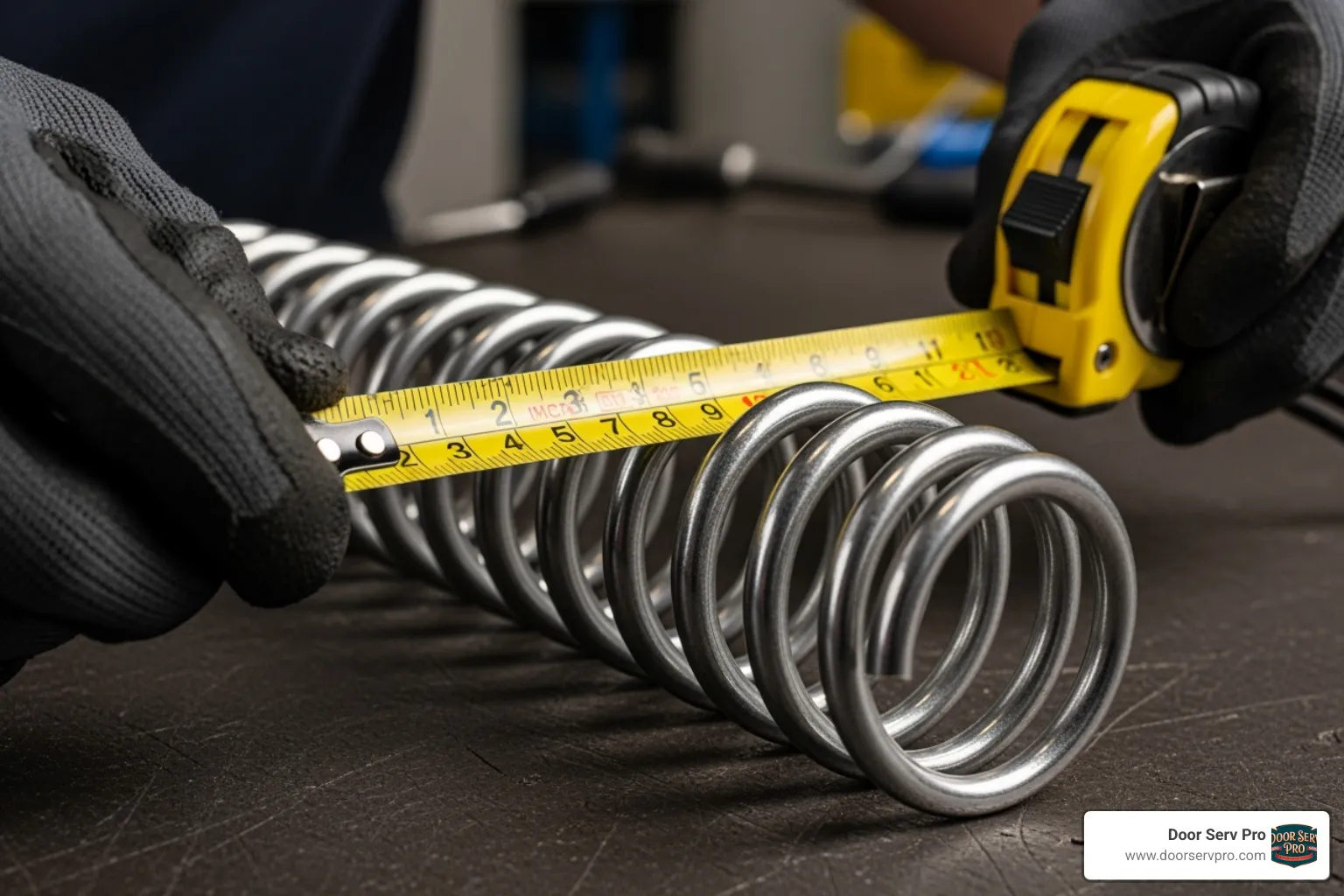
For garage door torsion spring replacement, accurate measurements are absolutely critical for safety and performance. Getting them wrong will cause significant problems down the road.
Before ordering parts, follow this golden rule: always replace both springs at the same time. Your springs have endured the same number of cycles. When one fails, its partner is usually not far behind. Replacing both ensures a perfectly balanced door and prevents another breakdown in the near future.
How to Accurately Measure Your Garage Door Torsion Spring
Getting the right replacement garage door torsion spring requires three precise measurements with no room for guesswork.
- Wire Size: Use the professional 10-coil method. Count 10 consecutive coils and measure their combined length to the nearest 1/16th of an inch, ensuring there are no gaps. For even better accuracy, measure 20 coils and divide by 20. This method provides the necessary precision.
- Inside Diameter (ID): This is often the easiest measurement. Look for markings like P175 (1 3/4") or P200 (2") stamped on the spring's cones. If the markings are gone, measure the hollow space inside the coil. Most residential doors use either 1 3/4" or 2" ID springs.
- Spring Length: If your spring is broken, slide the two pieces together and measure the total length of the coils only (do not include the cones). For an intact spring, measure its length only when it is fully unwound and relaxed.
For a visual guide, see this resource: How to Measure Your Replacement Torsion Springs.
Choosing the Right Replacement Spring
With your measurements, you'll need to make a few key decisions.
- Wind Direction: This is crucial. Standing inside your garage facing the door, the spring on your left is typically right-hand wound (RHW), and the spring on your right is left-hand wound (LHW).
- Spring Quality: Standard springs are rated for 10,000 cycles. For heavy use or longevity, consider high-cycle springs (20,000+ cycles). They cost more upfront but can double the spring's lifespan.
- Lift System: Most homes have standard lift systems. If your door tracks go straight up for a long distance before turning, you may have a high-lift or vertical-lift system that requires different spring calculations.
FeatureOil-Tempered Torsion SpringsGalvanized Torsion SpringsAppearanceBlack coatedSilver, shiny finishDurabilityExcellent, generally maintain tension well over timeGood, but tend to lose more tension over timeCorrosionSusceptible to rust if not maintained (oiled)Better resistance to corrosion, especially in moist environmentsRecommendationPreferred for most standard residential applications, with regular lubricationMay be considered for corrosive environments, but still benefit from oiling
Oil-tempered (black) springs are the standard choice for their durability. Galvanized springs offer better corrosion resistance for humid environments but may lose tension faster. Either way, regular lubrication is key to a long life.
The Ultimate DIY Replacement Guide
Replacing a garage door torsion spring is one of the most dangerous DIY projects. The springs are under tremendous tension and can cause serious injury if mishandled. One mistake can lead to an emergency room visit. If you are mechanically inclined, cautious, and have the right tools, it can be done safely. However, there is no shame in calling a professional; sometimes, that's the smartest decision.
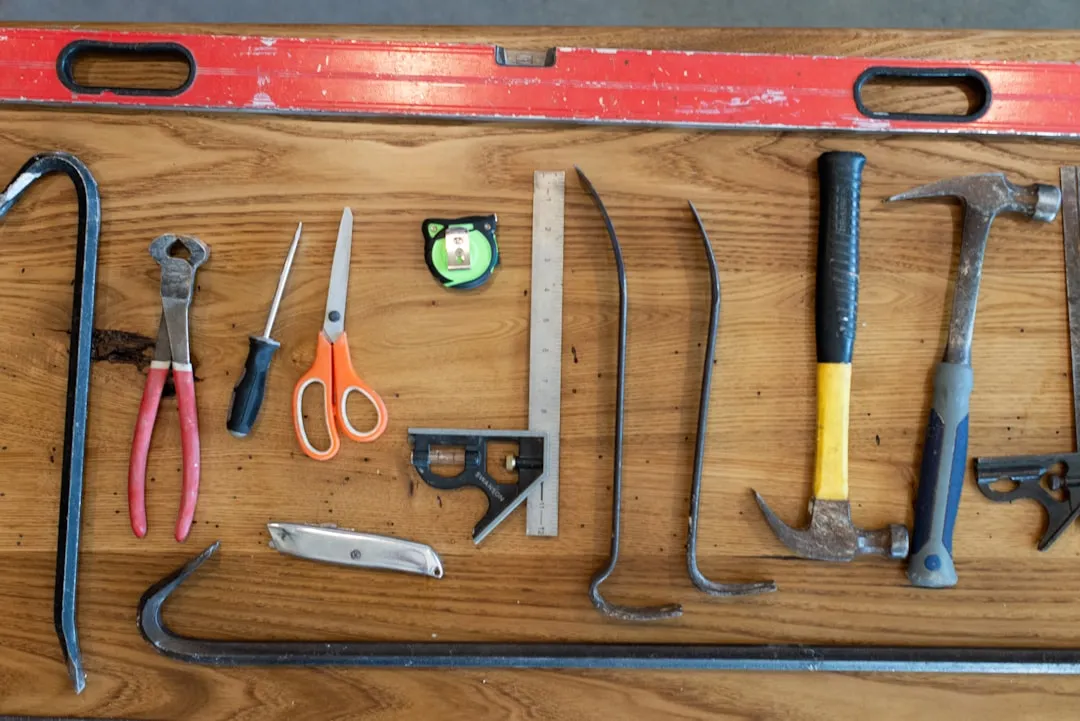
Essential Tools and Safety Gear
Using the right equipment is non-negotiable. No shortcuts.
- Winding Bars: Your most critical tool. You need two proper steel winding bars (typically 18" long, 1/2" diameter) that fit the winding cones perfectly.
- C-Clamps: At least two sturdy C-clamps to lock the door to the tracks.
- Socket Wrench Set: For loosening and tightening bolts.
- Stable Step Ladder: To safely reach the torsion assembly.
- Safety Glasses & Leather Gloves: Eye protection is mandatory to prevent injury from flying debris. Gloves improve grip and protect your hands.
- Permanent Marker: For marking cable and drum positions.
Step-by-Step Replacement Instructions
This process requires complete attention. Rushing invites disaster. Always refer to the instructions included with your new springs.
- Secure the Door: Close the garage door completely and unplug the opener. Clamp the door to the vertical tracks on both sides with C-clamps, just above the bottom roller. This prevents the door from flying up unexpectedly.
- Unwind the Old Spring (If Intact): Insert one winding bar firmly into a winding cone hole. While holding it, insert the second bar into the next hole. Never let go of a winding bar. Turn the cone a quarter turn at a time, alternating bars while maintaining control. A 7-foot door needs about 30 quarter turns; an 8-foot door needs about 34.
- Disconnect Components: Once tension is released, loosen the set screws on the cable drums and the bolts on the center support bracket. Slide the drums away from the end bearing plates. Now you can slide the old garage door torsion spring off the shaft.
- Install the New Spring: Slide the new garage door torsion spring onto the shaft with the correct orientation (LHW spring on the right, RHW on the left, as viewed from inside). Position the stationary cone against the center bracket.
- Reattach Cables and Drums: Ensure cables are straight and seated in the drum grooves. Tighten the set screws on the cable drums firmly.
- Wind the New Spring (Most Dangerous Step): Insert your winding bars and apply tension by turning the winding cone upward. Count your quarter turns carefully (e.g., 30 for a 7-ft door, 34 for an 8-ft door). For more technical details, see this resource: An engineer's perspective on torsion spring replacement.
- Secure the Winding Cone: Keep constant pressure on the top winding bar while you tighten the set screws against the torsion shaft until they are extremely tight.
- Test the Door: Remove the C-clamps and plug in the opener. Manually open and close the door several times. A balanced door should stay put when halfway open. If not, you may need to adjust tension by a quarter turn, using extreme caution.
Common Mistakes to Avoid
- Using Incorrect Tools: Never use screwdrivers or rebar instead of proper winding bars. They can slip or break, causing severe injury.
- Measurement Errors: An incorrectly sized spring creates an unbalanced door and strains the opener.
- Incorrect Tension: Under-wound springs make the door heavy; over-wound springs cause it to fly open and stress components.
- Forgetting to Tighten Set Screws: Loose screws on winding cones or drums can be catastrophic. Double-check that all hardware is secure.
- Working Alone: A helper can hand you tools and provide assistance in an emergency.
DIY vs. Professional Replacement: Making the Right Call
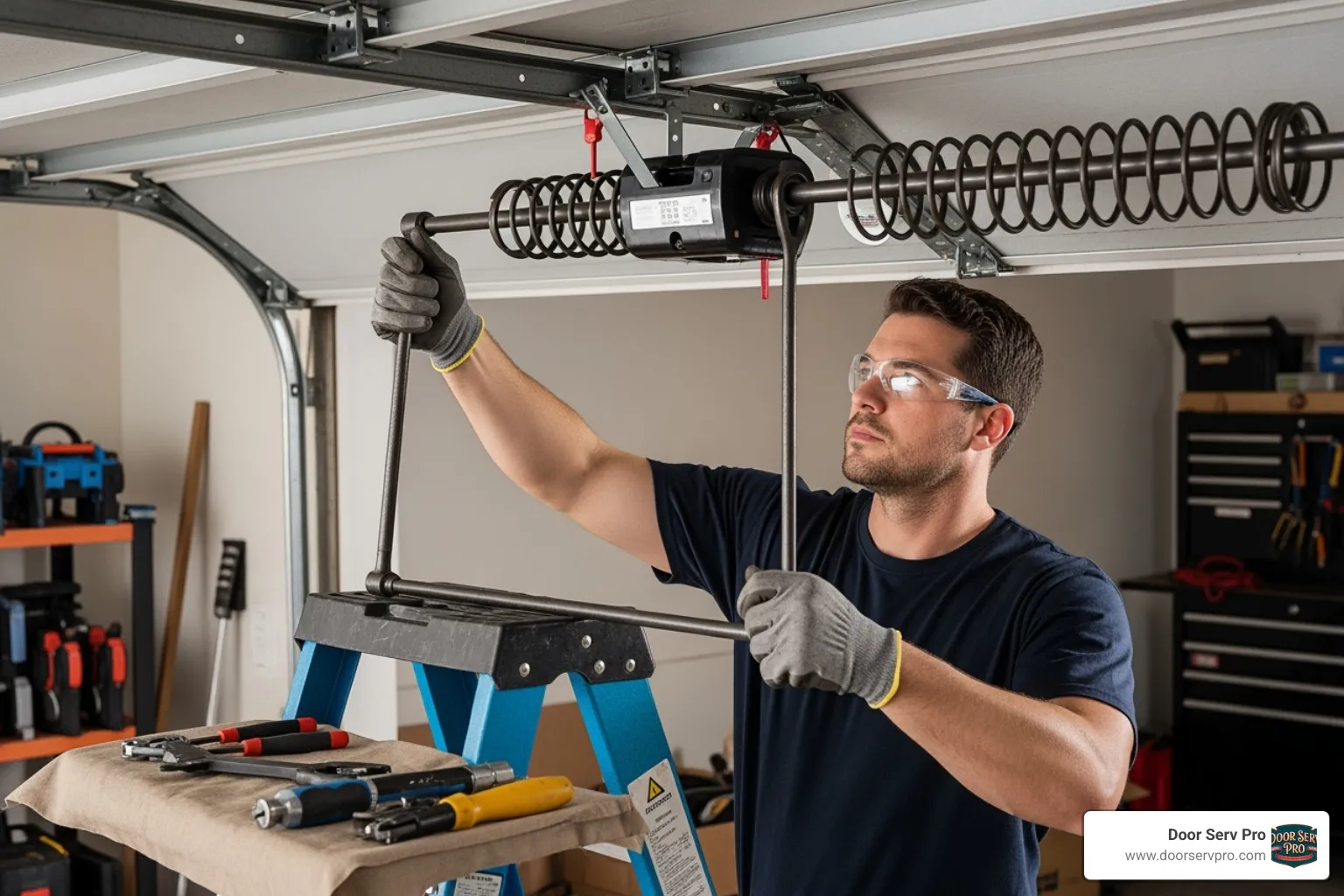
While DIY repairs can be satisfying and save money, replacing a garage door torsion spring requires a serious evaluation of the risks. This isn't a typical home project; it involves components storing enough energy to cause severe harm.
The Risks of DIY Torsion Spring Replacement
Garage door torsion springs are essentially loaded weapons, holding back hundreds of pounds of force.
- Stored Energy Release: If a winding bar slips or a screw fails, the spring unwinds violently. The bar becomes a spinning metal club that can strike with devastating force.
- Projectile Parts: Broken spring pieces, tools, or hardware can fly across the garage at high speeds, creating a dangerous zone.
- Falling Door: A sudden loss of tension can cause the heavy garage door to crash down without warning, causing catastrophic damage or injury.
- Serious Injury or Death: These are real possibilities. Emergency rooms regularly treat injuries from these repairs, including broken bones, lacerations, and head trauma. Some accidents result in permanent disability or death.
When to Hire a Professional
In certain situations, calling an expert is the only smart choice. Your safety is worth more than any potential savings.
- Lack of Proper Tools: If you don't have genuine winding bars designed for this job, stop. Using improvised tools is unacceptably dangerous.
- Complex Systems: High-lift, vertical-lift, or commercial doors have unique configurations that require professional expertise.
- Low Confidence: If you feel overwhelmed or uncertain after reading this guide, trust your instincts. Recognizing your limits is a smart decision.
- Valuing Safety and Warranty: Hiring qualified technicians ensures the job is done right, with warranties on parts and labor. It also provides peace of mind. For more on this, see: Properly replacing or adjusting garage door springs.
The bottom line: if you have any doubt about your ability to complete this repair safely, please call a professional. At Door Serv Pro, our NATE-certified technicians handle these dangerous repairs daily across WV, VA, PA, and MD. With over 25 years of expertise, we know how to get the job done safely and reliably.
Frequently Asked Questions about Garage Door Torsion Springs
With 25 years in the business, we've heard nearly every question about garage door torsion springs. Here are answers to the most common ones.
Should I replace both torsion springs if only one is broken?
Yes, absolutely replace both springs at the same time. Both springs have the same age and have endured the same number of cycles. When one breaks, the other is near the end of its 10,000-cycle lifespan and likely to fail soon.
Replacing both springs is like replacing tires in pairs. It ensures your door remains perfectly balanced, preventing uneven lift that can strain your opener and cause poor operation. It's a crucial step for long-term reliability.
How long does a standard torsion spring last?
The industry standard for garage door torsion springs is 10,000 cycles. How long this lasts depends on your usage.
- For a family using the door twice a day, a spring can last 12 to 14 years.
- For busier households with more frequent use, the lifespan might be closer to 5 to 7 years.
The good news is you can upgrade to high-cycle springs rated for 20,000 cycles or more. They cost slightly more but can potentially double the spring's lifespan, making them a smart investment for long-term homeowners.
How can I maintain my new torsion springs to prolong their life?
Maintaining your garage door torsion springs is simple and effective.
- Regular Lubrication: Every 3 to 6 months, apply a high-quality garage door lubricant along the entire length of each spring. This reduces friction and prevents rust, which can shorten a spring's life.
- Visual Inspection: Periodically check your springs for rust or unusual wear. Also, inspect the lift cables for any signs of fraying.
- Test Door Balance: Disconnect the opener and lift the door halfway. A well-balanced door should stay in place. If it moves, the springs may need professional adjustment.
Proper maintenance can often help your springs exceed their expected lifespan, providing reliability and peace of mind.
Conclusion
Replacing a garage door torsion spring is a project that demands extreme caution. This guide has covered the essentials: understanding the system, accurate measurements, correct tools, and safety protocols, while being upfront about the dangers involved. While the project can be rewarding for a skilled DIYer, that satisfaction should never come at the expense of safety.
Safety must always be your top priority. If you feel any uncertainty, lack the proper tools, or value the peace of mind from professional service, calling an expert is the wisest decision.
At Door Serv Pro, we understand this balance. As a family-owned company with over 25 years of experience, we've seen the consequences of failed DIY attempts. Our founder, Paul Wiese, built this company on the principle of providing every homeowner with a flawless and safe garage door system.
Whether you need guidance for a DIY repair or want to dispatch our NATE-certified technicians, we are here to help. We combine technical excellence with a personal touch, ensuring every project reflects the quality and reliability that transforms a house into a home. We don't just fix doors—we create lasting impressions, one entryway at a time. Sometimes, that means knowing when to put down the tools and pick up the phone.
